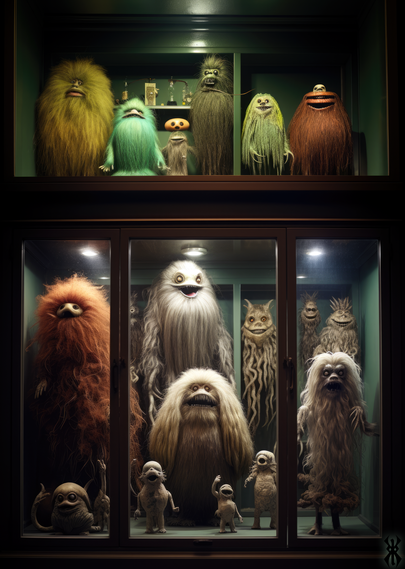Hi everyone, this is Sharon A. Hill, the owner of this Modern Cryptozoology site. Originally, the site was developed as an annotated bibliography. With the help of Matt Bille, we added mentions of many older books. As time permits, I will add new ones. I have a slew of backlog books, old and new, to add. But my goal now is to really focus on what the title suggests – what is modern cryptozoology. So, content will include more links and discussion about what’s going on in cryptozoology today.
What IS going on with modern cryptozoology?
A lot. Possibly more than ever before.
I was in a local Pennsylvania garden center last weekend when I overheard two of the employees discussing Mothman. I think they were talking about either buying or selling items related to mothman for Halloween. This was just one of many instances of mothman fluttering into mainstream talk. If you are under 30, there is a good chance that you have come across a mention of mothman, dogman, or the chupacabra via social media or consumer content.
Thinking back to the dawn of the field of cryptozoology, from the 1950s to the 1980s, none of those creatures were considered by founders Heuvelmans and Sanderson. Now, they are the most popularly cited cryptids behind Bigfoot and lake monsters. This is a big shift!
A small core group of scholarly-minded colleagues and myself regularly discuss the latest on cryptids: from their far-back history to current pop-cultural trends. Again, a BIG change is obvious in the past thirty years.
Celebrity cryptids
Chupacabra was the first digitally-publicized and Internet-famous monster. And, wow, did that work out well! It became a sensation. Bigfoot and Nessie both benefitted immensely from web forums, cable TV shows, YouTube content and webpages, merchandising and promotional advertising, podcasting, and social media. The Mothman festival, The Mothman Prophecies movie, and the resurgence of interest in Keel’s work propelled Mothman to unexpected, new heights of notoriety. Another popular cryptid, the Flatwoods Monster, or Braxxie, started out described as an alien-robot. Now, it’s depicted as a fantastical, glamorous, female creature, or “Momster” and a well-known figure appearing throughout video game history. A grainy, rather ridiculous video of creatures that looked like walking pants became a beloved cryptid; the Fresno Nightcrawler was “cutified” into plushies and put on stickers. And the current top dog is the dogman/werewolf creatures, who were legendary in only a few parts of the country, but have in the past 15 years overrun most of the Bigfoot circles.
As I look more into the popular cryptids of today, I have SO many thoughts. Some of those thoughts I’ve written up in the Pop Goes the Cryptid section. I’m not the only one seeing the excitement surrounding discussion of cryptids. See the News and Views category, and watch for more to come.
Cryptids expanded and diverse
Cryptid town festivals are everywhere, with more organized every year. As small towns realize that people love their local monsters, weekend events with vendors and speakers attract a diverse crowd. The diversity of the audience is especially interesting. In the early 2000s, cryptid-centric events could be characterized as the domain of older, white males. But, today? Well, visit a local cryptid festival and see young kids spotting their favorite monster merch, young adults with various body art, modifications, and hair color enjoying the dark, spooky or horrifying tales and aesthetic. People bring their families to enjoy weird creatures. It’s so much fun to imagine and believe.
It’s an amazing thing – how the concept of cryptids has spread across generational boundaries. In that process, the concept and idea of cryptids has changed. Since there are no longer scientists as figureheads or gatekeepers, cryptids can become whatever we choose for them to be. Generally, they have become more supernaturally- and spiritually-associated. Some have become cute or sexy. Others gained reputations as dangerous or violent. A few have become positive symbols of “otherness” and, in this way, help kids and teens embrace their own individuality and cope with social rejection.
We now truly have post-cryptid cryptozoology where the aim of identifying the zoological basis of a creature is diminished and, instead, the value of cryptids lies in identifying WITH the creature. Cryptozoology of the 21st century exploded the previous boundaries that originally oriented the field in the scientific context of zoology. Today, cryptozoology is a socio-cultural phenomenon. I argue, it’s an important one that we should be exploring.
Please subscribe to the posts (see sidebar to “Follow”), follow on Mastodon, RSS feed or visit often. If you like the posts, please share. Send me comments, books to review, or tips on news and other great content.
#Braxxie #cryptids #Cryptozoology #FlatwoodsMonster #monsters #mothman #mysteriousCreatures #popCulture #zoology
